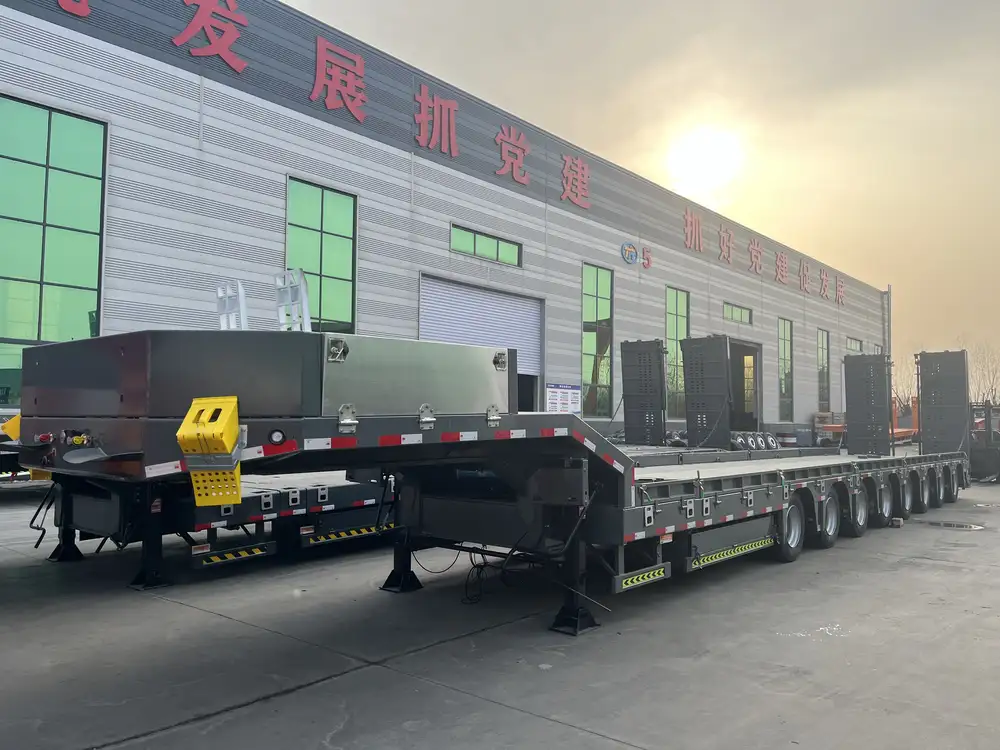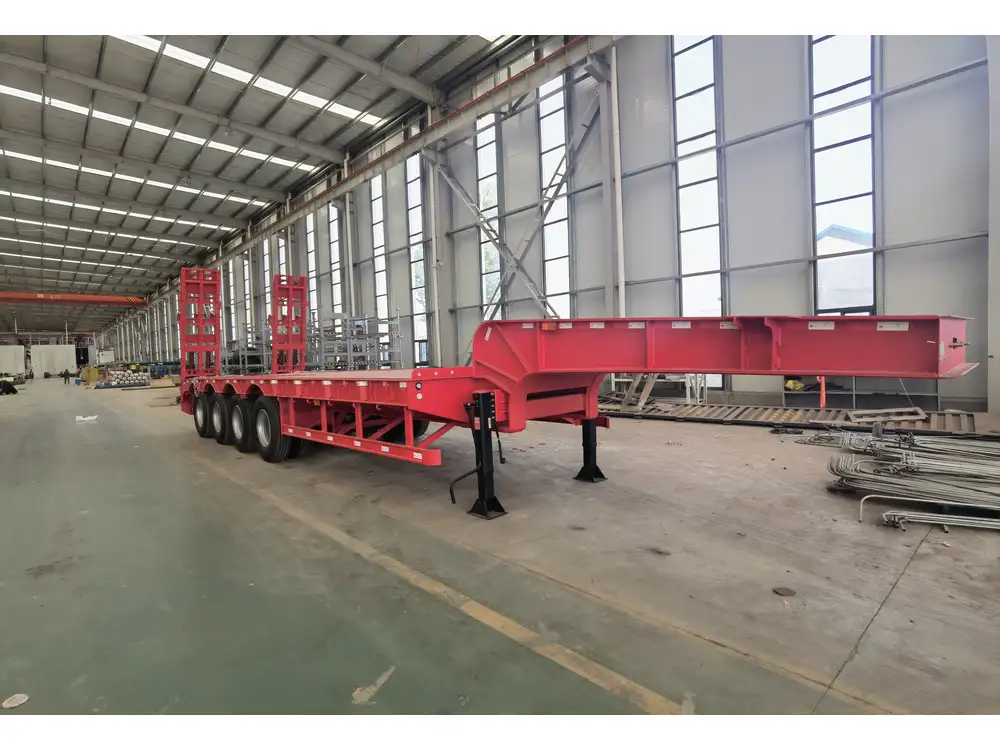When it comes to the logistics and functionality of trucking operations, one of the key components that operators must consider is the fuel capacity of their tractor trailers. This factor not only affects operational efficiency but also influences profitability and route planning. In this comprehensive guide, we delve into the various aspects of tractor trailer gas tank capacities, including average sizes, factors influencing fuel needs, and important considerations for transporting goods effectively.
Average Tractor Trailer Gas Tank Capacity
The capacity of a tractor trailer gas tank can vary significantly based on the type of vehicle, purpose, and manufacturer specifications. The most common configurations of tractor trailer fuel tanks include:
| Type | Average Capacity | Usage Context |
|---|---|---|
| Single Tank | 100-150 gallons | General freight transport, regional routes |
| Dual Tanks | 200-300 gallons | Long-haul operations, heavy haul transportation |
| Specialized Tanks | Up to 500 gallons | Specialized equipment or oversized loads |
Single vs. Dual Tank Configurations
While single tank configurations are popular for shorter hauls, dual tank setups offer the benefit of extended range, reducing the need for frequent refueling. This can be particularly advantageous in remote areas or for long-haul trucking where refueling stations are scarce.

Specialized Tank Features
For specialized vehicles, such as those transporting hazardous materials or oversized cargo, additional modifications may be included in the tank’s design to ensure safety and compliance with regulations. Features may include:
- Internal baffles to reduce fuel sloshing,
- Reinforced construction to withstand impact,
- Integrated pumps for efficient unloading.
Factors Influencing Tractor Trailer Fuel Needs
Several crucial factors contribute to the gas tank needs of tractor trailers, affecting how far a truck can travel and how often it needs to refuel.
1. Load Weight
The gross vehicle weight (GVW) affects fuel consumption dramatically. Heavier loads typically require more power and fuel to transport effectively. Operators need to balance load weight with fuel efficiency to optimize operational costs.

2. Driving Conditions
Terrain plays a pivotal role in determining fuel efficiency. Trucks operating on hilly or mountainous routes often consume more fuel compared to their flatland counterparts. Environmental conditions such as weather can also impact fuel requirements.
3. Engine Type and Efficiency
Modern diesel engines are designed for efficiency, but the specifics of each engine model, including horsepower and torque characteristics, can yield varying fuel consumption rates. Operators should consider investing in newer technology with enhanced fuel efficiency ratings.
4. Driving Behavior
The driver’s habits significantly influence fuel consumption. Aggressive driving, characterized by rapid acceleration and hard braking, leads to increased fuel usage. Implementing fuel-efficient driving practices can contribute to better mileage and lower fuel costs.

Calculating Fuel Needs for Different Routes
When planning trips, understanding the fuel needs is essential for optimal route planning. Below is a simple formula to estimate fuel requirements:
Fuel Requirement Formula
- Estimate Distance: Determine how many miles your route covers.
- Know the Fuel Economy: Understand the miles per gallon (MPG) your tractor trailer achieves under varying load conditions.
- Calculate Fuel Needs:
Example Calculation
If you plan to travel 600 miles and your average MPG is 6, the calculation would be:
[ \text{Fuel Need} = \frac{600}{6} = 100 \text{ gallons} ]This simple calculation allows operators to determine how much fuel they will need and plan for refueling stops accordingly, saving both time and money on logistics.

Common Questions About Tractor Trailer Fuel Tanks
How Many Miles Can a Fully Loaded Tractor Trailer Travel?
This is a critical question for every trucking operation. Assuming an average fuel capacity of 200 gallons and a fuel economy of 6 MPG, a fully loaded tractor trailer could theoretically travel:
[ 200 \text{ gallons} \times 6 \text{ MPG} = 1200 \text{ miles} ]However, this figure will vary based on load, terrain, and driving conditions.
What is the Impact of Weather on Fuel Capacity and Efficiency?
Adverse weather can negatively affect fuel efficiency. For instance, strong headwinds can decrease a truck’s MPG, while inclement weather can cause drivers to alter speeds or routes, thereby impacting fuel needs. Operators must plan for these variables, particularly when sourcing their fuel and determining the best refueling strategy.

How Do Fuel Prices Affect Operational Cost?
With fluctuating fuel prices, a truck’s running costs can change drastically. To mitigate this uncertainty, many fleet operators engage in options like fuel hedging or develop cost-effective routing strategies that minimize fuel consumption even when prices soar.
Fuel Efficiency Tips for Operators
Improving fuel efficiency not only leads to cost savings but also promotes sustainability within the trucking industry. Here are some effective strategies:
Regular Maintenance: Ensure tractors are serviced on a regular basis to keep engines running efficiently.
Tire Management: Maintain proper tire pressure and alignment. Under-inflated tires can increase rolling resistance and fuel consumption.
Streamlined Routing: Use GPS technology and fuel management systems to optimize routes and reduce milage.
Weight Management: Ensure compliance with weight regulations but also strategically manage load distribution to maintain optimal highway performance.
Invest in Technology: Consider retrofitting older model trucks with performance-enhancing technologies such as aerodynamic fairings.
Conclusion
Understanding how much a tractor trailer gas tank holds, coupled with the influencing factors of fuel consumption, is vital for operators managing logistics and transportation services in today’s competitive landscape. By grasping these concepts, trucking businesses can make informed decisions, optimize their operations for efficiency, and enhance profitability in the long run.
Being equipped with information about average capacities, factors affecting fuel needs, and efficient operational practices empowers operators to navigate their routes effectively— fueling success in business while minimizing costs. Each decision, from the fuel tank’s size to driving practices, can significantly impact the overall efficiency of a transportation operation.
Thus, it’s imperative to consider all these dimensions when planning logistics strategies for optimal performance and cost management in trucking.



